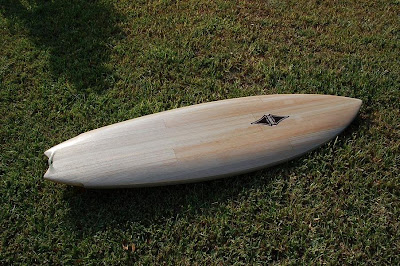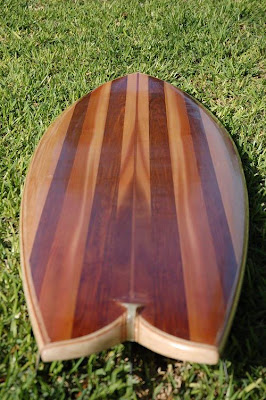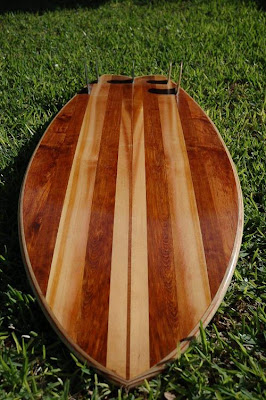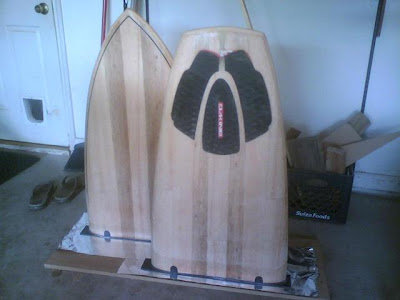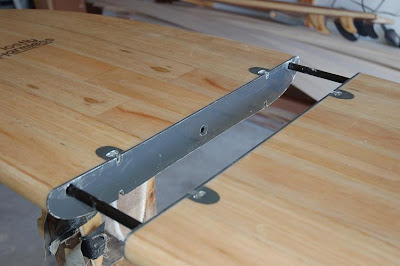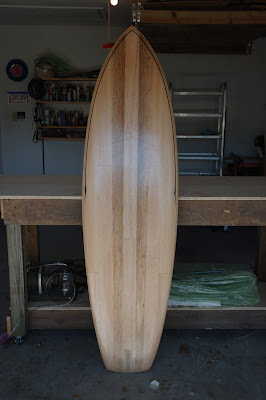Multi-part/ multifunction travel board
There are a couple of differences though. First off, I made a 1.5" carbon fiber tube and rod for the center, to avoid having to mess with multiple rods and keeping them aligned. Secondly, I used some center boxes from probox as my milling stock to make my clamping units. This was a huge improvement from my previous units, both from a materials perspective and from a ease-of-production perspective since they already had a big center channel built into them.
Finally, and here's the development of which I'm most proud, the tail of the board has a removable section. With the removable tail section, I can use it as a 6'2" quad/tri, widepoint centered, or a 6'7" rounded pin bonzer5- widepoint 2.5" forward of center. Basically with this, I figure I'm pretty good in anything from knee-high to solid overhead.
I was definitely experimenting with the resin on the bottom lam. I've had some ideas about doing combinations of clears, tints and opaques over wood for a while... As you can see, the results were kind of a mixed bag. It's interesting, but not exactly what I expected.
6'2" N14.25 M21 T13.25 2.75"Thick
6'7" N14.25 M21 T16.25 2.75"Thick
The removable section is 5" long, so that makes the 6'2" have a centered widepoint, and the bonzer rounded pin has a widepoint 2.5" forward.























